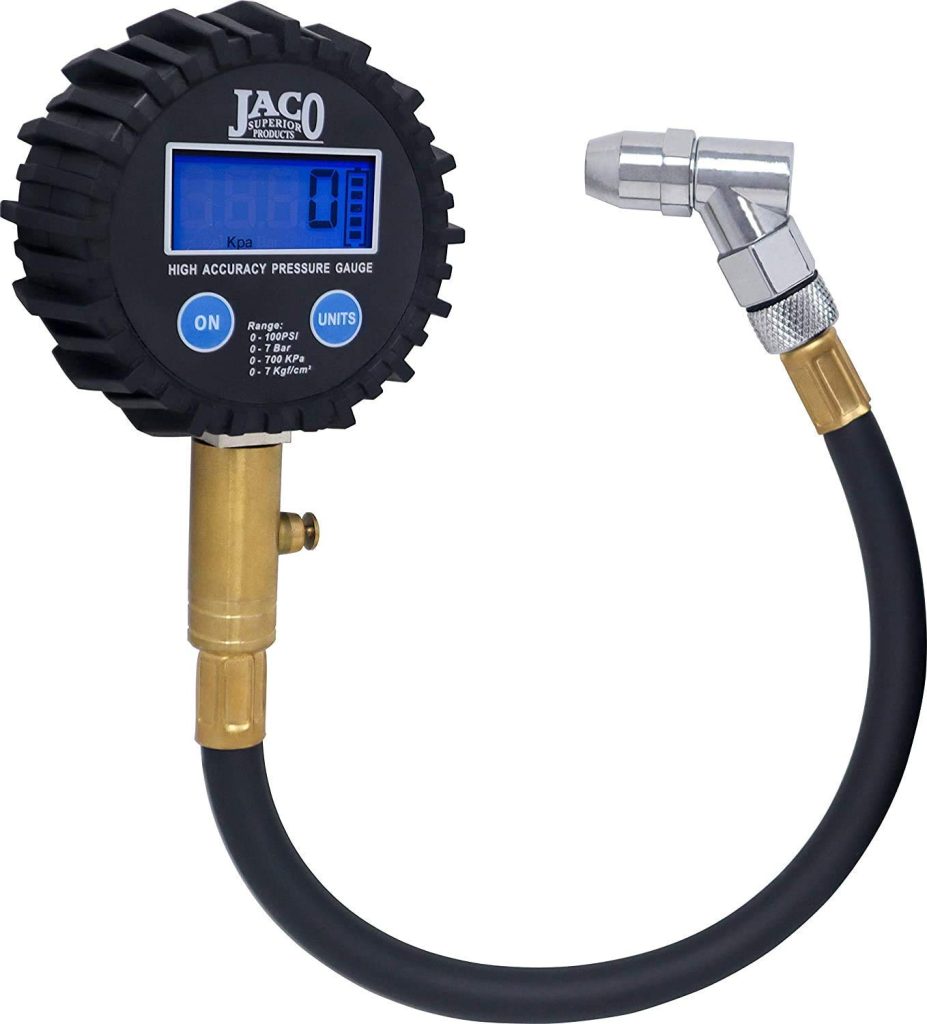RV Tire Pressure Explained
Venturing on a journey, the great expanse of the highway stretching before you, the camaraderie of fellow travelers, and the familiarity of your cozy home-on-wheels, an RV trip exists as a unique blend of freedom and comfort. But behind that sense of adventure and relaxation, pulsing like the heart beneath it all, is the importance of keeping your mobile camper or RV trailer refuge in top-notch condition. Among the myriad of factors that play a pivotal role in this upkeep, RV tire pressure, often overlooked, holds a phenomenal influence.
Importance of Proper RV Tire Pressure

Just as a finely-tuned instrument produces the most beautiful melodies, keeping your RV tire pressure at its optimal level ensures a smooth, safe, and efficient journey. The role of maintaining proper tire pressure extends beyond a simple checkbox on your pre-trip checklist, it is indeed the hidden symphony that orchestrates your travel experience.
Whether you’re navigating a sharp curve or braking abruptly, underinflated tires can compromise your RV’s handling dynamics, putting you and your love ones at risk. Consider this: each tire supports a fraction of your RV’s total weight. When underinflated, the tire’s contact patch (the area that touches the road surface) increases, causing excessive tire wear and generating excessive heat, which could lead to unexpected and catastrophic tire failure or blowouts.
Even from a financial point of view, properly maintaining your tire pressure pays off in the long run. With the hefty gas bill an RV trip can produce, you’d be interested to learn that underinflated tires can reduce fuel economy by up to 3%. While this may appear insignificant at first glance, these savings can accumulate into a sizable amount when considering long-term RV adventures.
In essence, the significance of proper RV tire pressure cannot be overstressed, affecting everything from the basic functionality of your vehicle to your overall RV holiday experience.
How to Check Tire Pressure
Knowing the correct tire pressure for your RV is one thing, but knowing how to check it is equally important. Here are some steps to guide you through this process:
- Invest in a Quality Tire Pressure Gauge: This is not the place to cut corners. A good quality tire pressure gauge is a must-have tool for every RVer. There are different types of gauges available: digital, dial, or stick. Pick the one you’re most comfortable with.
- Check the Tires When Cold: Tire pressure should be checked when the tires are cold, as heat from driving for even a few miles can cause the pressure to increase. It’s best to check your tire pressure in the morning before the day heats up or before you hit the road.
- Remove the Valve Cap: Each of your tires has a valve stem sticking out of the rim. Twist the cap off of the valve stem.
- Place the Gauge on the Valve: Firmly press the gauge onto the valve stem. Ensure it is pressed straight on to avoid air escaping.
- Read the Pressure: Depending on the type of gauge, you’ll either have an automatic readout (digital), a needle pointing to the number (dial), or a small bar that pops up with the measurement (stick).
- Repeat the Process for all Tires: Ensure to check all tires, including the spare one.
- Top Up If Necessary: If the pressure is lower than the suggested range, add more air. Many gas stations have air pumps, or you might consider investing in a portable air compressor for RV trips.
- Recheck the Pressure: After adding air, it’s always advisable to recheck the pressure to ensure you haven’t overfilled the tires.
Alternatively, you can get aftermarket tire-pressure monitoring systems to continuously monitor your tire pressure automatically!
Remember, frequent checks are your best defense against unexpected tire problems on the road. Make this task part of your regular RV maintenance routine to ensure a smooth and safe journey.
Affiliate Link – Small commission may be earned
JACO ElitePro Digital Tire Pressure Gauge – Professional Accuracy
- Professional Accuracy
- Strong, High-quality, and Rugged.
- Advanced Engineering
- Smart Display
- 100% Lifetime Warranty by JACO
Factors Determining Ideal RV Tire Pressure
Establishing the right tire pressure for your RV isn’t a one-size-fits-all scenario. It’s a nuanced decision that requires careful consideration of several variables that contribute to how your vehicle interacts with the open road under varying circumstances. Let’s dive deeper into these factors:
- Vehicle Weight: This is arguably the most critical single factor in determining the right tire pressure. It includes the weight of the RV as well as the additional load added by passengers, luggage, and onboard supplies. It’s essential to understand that each tire supports only a portion of the total weight, so you can’t simply divide the total weight by the number of tires.
- Tire Size and Type: Different types of tires (radial, bias, etc.) and size categories (14″, 15″, 16″, and so on) generally require different pressure ranges. Your RV should have a placard or decal on the driver’s side door jamb, fuel door, glove box door, or inside of the trunk lid that provides this information.
- Ambient Temperature: Tire pressure changes with temperature. For every 10 degrees Fahrenheit change in temperature, your tire’s pressure will change by about 1 PSI (Pound per Square Inch). It will increase in hotter conditions and decrease in colder ones.
- Driving Conditions: The road surfaces (smooth highways, grittier terrains, etc.) and speeds at which you travel also influence the best pressure for your tires. High-speed, long-distance driving usually requires higher tire pressure than town driving at low speeds.
Taking these variables into account can provide a more accurate gauge of the ideal tire pressure for your specific RV and driving conditions. However, a general rule of thumb is to stick with the manufacturer’s recommended tire pressure as a baseline.
Breakdown of Suggested Tire Pressures by RV Type and Weight
Every RV is unique, and each requires a specific tire pressure that takes into account its type, weight, tire type, and other pertinent factors. Generally, there are three types of RVs – Class A, Class B, Class C – as well as fifth-wheels and travel trailers. Each has its own recommended tire pressure range.
- Class A Motorhomes are typically the heaviest of all RV types, ranging from 13,000 to 30,000 pounds. Most Class A RVs have a recommended tire pressure of 80-105 PSI.
- Class B Motorhomes, often referred to as camper vans or conversion vans, are typically lighter, between 6,000 to 8,000 pounds. The average suggested tire pressure is 50-65 PSI for these vehicles.
- Class C Motorhomes are in-between, offering more room than a Class B but on a smaller scale than Class A. They typically weigh between 10,000 to 12,000 pounds and require a tire pressure of 60-80 PSI.
- Fifth Wheel Trailers directly hitched to the bed of a pickup truck, range in weight from 7,000 to 20,000 pounds. The recommended tire pressure usually lies between 65-80 PSI.
- Travel trailers, towed directly from the frame hitch of a vehicle, typically weigh 3,000 to 12,000 pounds and have a suggested tire pressure range of 50-65 PSI.
Please note these are ballpark figures. Many factors can influence the best tire pressure for your vehicle. Always consult your owner’s manual or a professional technician for the most accurate information.
Detailed Explanation and Specifications through a Table
An easy-to-understand table for the suggested tire pressures can be helpful. Here’s a quick reference breakdown, but remember, always refer to your vehicle’s specific manufacturer guidelines or consult with a qualified technician.
| RV Type | Weight (pounds) | Suggested PSI range |
|---|---|---|
| Class A Motorhome | 13,000- 30,000 | 80- 105 PSI |
| Class B Motorhome | 6,000- 8,000 | 50- 65 PSI |
| Class C Motorhome | 10,000-12,000 | 60- 80 PSI |
| Fifth-Wheel Trailer | 7,000-20,000 | 65- 80 PSI |
| Travel Trailer | 3,000- 12,000 | 50- 65 PSI |
Remember, these are general estimates and may not be suitable for every specific RV make and model. Your mileage may vary, so it’s always crucial to consult your owner’s manual, your tire’s placard, or a trusted vehicle professional.
This table and the brief guidelines mentioned in the article should serve as a starting place, but not a definitive or comprehensive guide. Practicing regular RV maintenance, including diligent tire pressure monitoring, is an essential part of ensuring your trip remains enjoyable and safe.
Conclusion
An RV is much more than just a vehicle. It’s your home, your means for exploration, a vessel for creating indelible memories. Ensuring it operates under optimal conditions is vital. So spend a few extra minutes to check your tire pressure and adjust it as required. You’ll be rewarded with better fuel economy, increased tire lifespan, and most importantly, a safer and smoother journey. Whether you’re an experienced Full Time RVer or just embarked on this adventure, understanding the importance of maintaining appropriate tire pressure can turn your trips into truly unforgettable journeys.







Leave a Reply